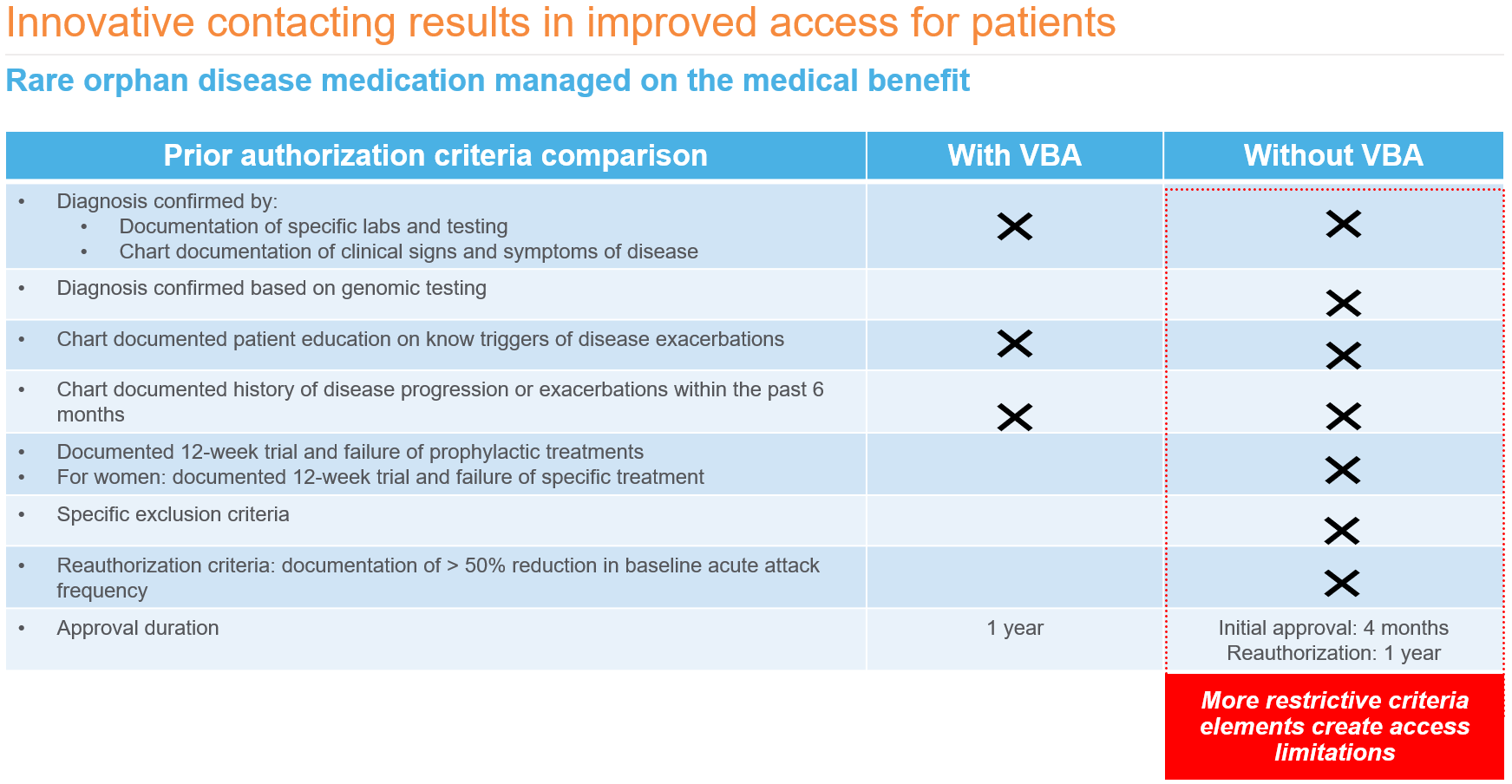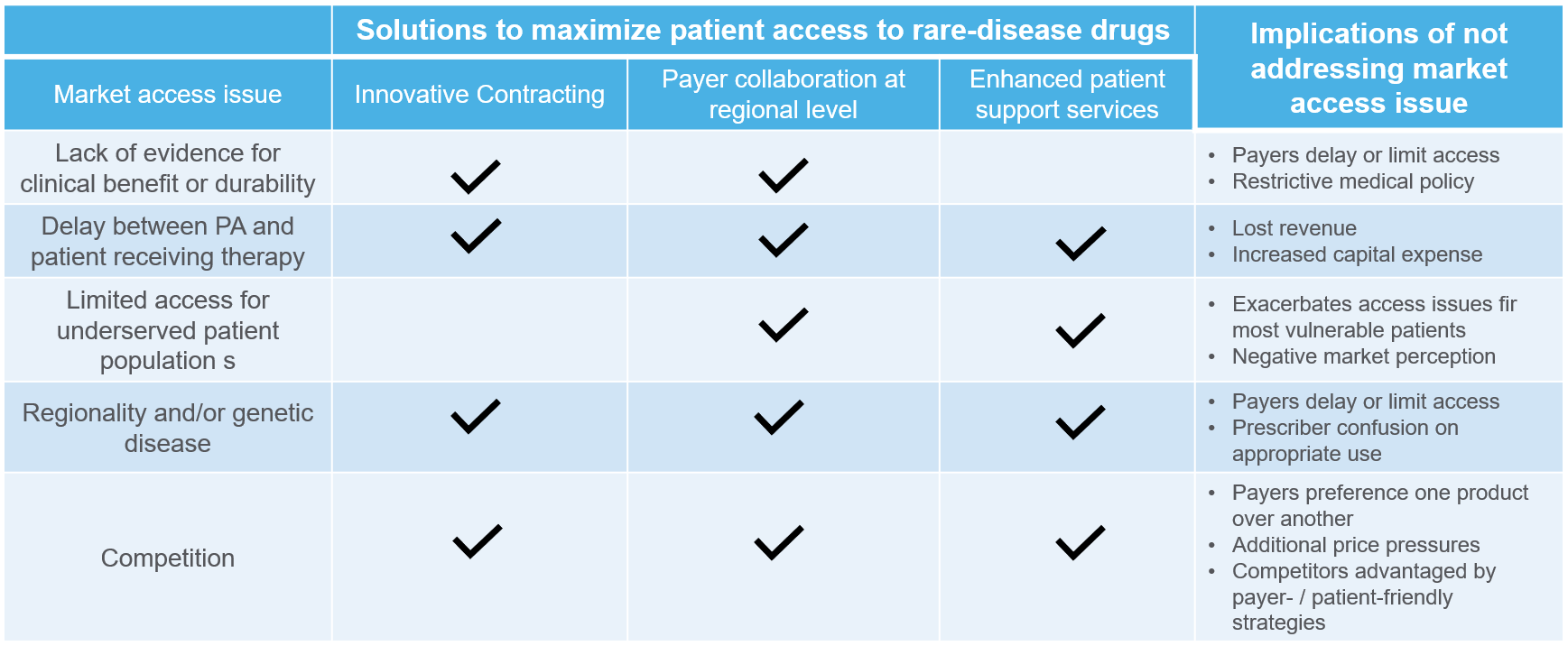Commercializing Rare-Disease Therapies is Getting Tougher - Real Endpoints
Commercializing Rare-Disease Therapies Is Getting Tougher
For an industry increasingly dominated by these drugs, commercial programs may need to take on the risk once reserved for development


By Roger Longman & Rob O'Brien
If you were to pick a symbolic hero of the drug industry’s rise to prominence it might be Alexander Fleming, who discovered penicillin; or maybe James Black, the very definition of the drug hunter, the Nobel prize winning developer of the first beta blocker and the first H2 antagonist – drugs that successfully treated millions of heretofore untreatable patients.
Today’s hero, on the other hand, would be Henri Termeer, the late CEO of Genzyme and the pioneer of the orphan-disease strategy – drugs for a few thousand people.
The modern pharmaceutical industry, built on primary care, is now all in on specialty – indeed micro-specialty. Drug candidates for rare disease categories dominate the pipeline for good scientific and economic reasons. The needs are acute; the science productive; development timelines relatively short; commercial costs – at least those around sales forces – modest; and prices high and – until recently – resistant to discounting.
But just as pharma flooded into specific primary care categories as a pioneer or two proved out the science, so they’re also doing in rare disease. Three companies market drugs for spinal muscular atrophy (SMA); there are another four in the pipeline. More than half a dozen drugs compete in hereditary angioedema, with another half-dozen in the pipeline. There are at least four late-stage competitors in myasthenia gravis. None of these conditions has much more (usually fewer) than 10,000 patients in the U.S.
But just as pharma flooded into specific primary care categories as a pioneer or two proved out the science, so they’re also doing in rare disease.
For payers, more drugs mean increased costs: more patients treated and more individuals treated with more than one drug. Payers initially saw Zolgensma, the $2.1 million gene therapy as a cure for SMA. It has worked well – but by no means perfectly. Many patients go on to other expensive SMA therapies – Evrysdi from Roche ($340,000 annually) and/or Spinraza from Biogen ($625,000 to $750,000 for the first year, half that in subsequent years). The bills are piling up. And for a medium-sized employer a single SMA patient can create an almost existential crisis. Stop-loss helps – but it isn’t cheap and a patient with chronic treatment will likely be carved out of coverage.
Payers aren’t only complaining about the prices. They’re also complaining about the lack of evidence and therefore the potential for inappropriate use and safety issues. Many of these drugs are approved on accelerated pathways – smaller populations, shorter trials, surrogate endpoints. These approvals are especially irksome to payers when they’re used by gene and cell therapy companies whose products promise life-long cures but whose durability is uncertain.
The payers have reacted as expected: they try to restrict utilization with complex medical policies – leading to coverage delays. Such policies are certainly more straightforward in primary care or prevalent specialty diseases – where exclusive formularies on the pharmacy benefit have driven rebates for winners often well beyond 60%.
For a medium-sized employer a single SMA patient can create an almost existential crisis.
But payers have new tools to help them with utilization management – most importantly with medical-benefit therapies, including those physician-acquired-and-dispensed drugs which they hadn’t been able to manage before. A host of service businesses have sprung up to help them, profiting mightily from the explosion of new medical-benefit rare disease drugs: Novologix (owned by CVS Health), New Century, AIM (owned by Anthem), Magellan, eviCore (owned by Express Scripts/Cigna), and a host of others. And these tools also help payers manage across the pharmacy and medical benefits – enabling a payer, for example, to step a patient through a pharmacy-benefit drug before he’s approved for a buy-and-bill drug on the medical benefit (or vice versa, for that matter). And with the ability to control medical benefit utilization has come a recent profusion of medical-benefit rebates, as payers have forced drug companies in competitive classes to pay for preference.
Take Gaucher Disease: Express Scripts recently excluded both Takeda’s VPriv and Pfizer’s Elelyso from its formulary in favor of Genzyme Sanofi’s Cerezyme – presumably, given the similarity among the drugs, because Genzyme offered a better deal. Spinraza sales are falling and Zolgensma’s have flattened – not just because many of the existing patients have been treated but because payers are making it easier to start on the cheaper Evrysdi.
All of which means that contracting in rare diseases – straight discounting or risk-sharing in return for smoother access – is no longer rare. And it’s effective. For example, we surveyed the nine regional payers who compose the Real Endpoints Payers’ Council on their policies around a specific well-known rare-disease drug. Those without contracts (an innovative outcomes-based agreement) had significantly more barriers to utilization than those that did (see Exhibit 1).

Indeed, we believe that innovative contracting — and in particular risk-sharing, or value-based approaches — is far more important in rare disease than in the larger specialty categories, where payers have a handle on the cost, standard tactics for mitigating increases, and for whom rebates are an important source of income. In rare disease, budget impact for payers is more uncertain; evidence of long-term efficacy and safety least apparent; and current rebate income non-existent. In short, value-based contracting in rare disease ticks all the incentives.
From our vantage point, rare-disease access requires other kinds of tools – sometimes similar, sometimes different — from the market access tools necessary in specialty diseases affecting broader populations, like rheumatoid arthritis and plaque psoriasis. In our work with manufacturers of rare-disease drugs, the ones that take a more innovative approach, while addressing the unique problems of regional payers and the patients they serve, seem to maximize patient access more effectively.
Rare-disease access requires other kinds of tools – sometimes similar, sometimes different – from the market access tools necessary in specialty diseases affecting broader populations.
Take one example of a manufacturer ready to launch a medical-benefit drug for a rare genetic disease that was distinctly more prevalent in certain regions than in others (we’ve changed details so as not to violate the client’s confidentiality). It has competitors both on the market and in late-stage development. The client’s efficacy data was differentiating from their commercial competitors, including a more convenient dosing schedule and the interesting finding that it had fewer adverse events than competitors in African-Americans (indeed African-Americans were slightly over-represented in the disease population but also less likely to be treated).
The efficacy and safety data, however, were limited both in duration and in size of the tested population (it is, after all, a rare disease). And there were no head-to-head trials with the main competitors. All of which led payers to tell us that our client’s therapy might have to step through a pharmacy-benefit competitor that was slightly less expensive.
We’ll focus for now on the value-based approach taken by the client – but that was only one part of the strategy. Ultimately it incorporated an innovative patient support service program (including an unusual Medicare strategy); a nearly unique distribution approach; and a way to mitigate for payers site-specific infusion costs. The basic point: value-based tools are necessary but not sufficient.
The client’s value-based approach specifically addressed the challenges around its paucity of data, higher cost, and regionality but also the benefits its efficacy and convenience advantages afforded patients.
Value-based tools are necessary but not sufficient.
After surveying a number of payers, the company created a value-based deal structure whose endpoints – based around easy-to-track pharmacy claims (including discontinuation, dose escalation, and the use of additional medicines) – dealt specifically with what payers felt were its under-evidenced, albeit FDA-approved label. In return for agreeing to what amounted to a maximum 20% rebate, the payer would agree to match its prior authorization to the FDA label and eliminate any step therapy requirements.
And rather than focusing their attention entirely on the top 10 plans, the client worked diligently to sign VBAs with several regional health plans where patient prevalence – thanks to the genetics of the disease – was disproportionately high. But these deals included two other features.
The first was a patient support services program focused on the African-American population, with both a genetic-testing outreach and a registry funded entirely by the manufacturer that could form the basis for a real-world evidence study around the drug’s value in underserved as well as majority populations. The second was a “prevalence cap” – since the plans didn’t actually know big the population was (they’d seen more patients appear as new therapies did).

Has the strategy worked? Too soon to tell, but we’re optimistic. As importantly, the payers felt they’d been heard: beyond addressing their skepticism around the evidence base for the drug, the strategy also helped payers with some of their goals, including a step toward a more inclusive and fairer healthcare system.
The broader message: rare-disease therapeutics need very different commercial strategies than do the industry’s traditional products. The challenge for biopharma executives, particularly those who’ve never had to deal with a suddenly more competitive and restrictive rare-disease marketplace: do they recognize the changes…and can they innovate around them? This is a call-to-action to ensure patients have access to these innovative therapies.

